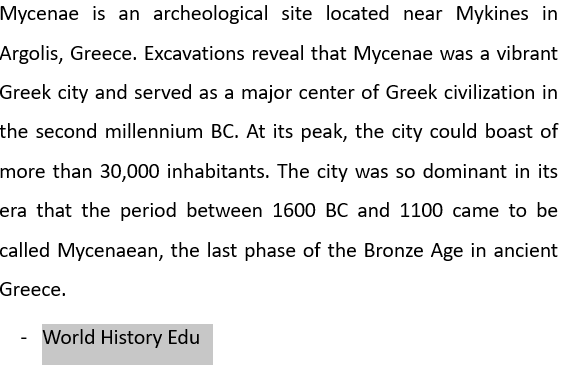
Mycenae (located in present day Argolis, Greece) was an ancient city in the northeastern part of the Peloponnese peninsula in Greece. It was a significant center of Mycenaean civilization, which flourished in Greece during the Late Bronze Age, from around 1600 BCE to 1100 BC.
Mycenae is an archaeological site located in the northeastern part of the Peloponnese peninsula in Greece. It is one of the most important Bronze Age archaeological sites in Greece and is listed as a UNESCO World Heritage Site. It received the honor in 1999
The ancient Greek city was a major center of Greek civilization from around 1600 BC to 1100 BC. It was believed to be the home of Agamemnon, the legendary king who led the Greeks in the Trojan War.
The site is famous for its monumental architecture, including the Lion Gate, the Cyclopean Walls, and the Royal Tombs, which are thought to have belonged to the rulers of Mycenae. The most famous of these tombs is the Treasury of Atreus, also known as the Tomb of Agamemnon, a massive beehive-shaped tomb built in the 13th century BC.
The site was first excavated in the 19th century by Heinrich Schliemann, who also excavated the site of Troy. Today, visitors can explore the ruins of the ancient city, including the palaces, the tombs, and the fortifications.

Other famous ruins of Mycenae is the Lion Gate, the main entrance to the citadel of Mycenae. Located in the northeastern side of the acropolis, the gate was built somewhere 1252 BC. The name comes from the relief sculpture of two lionesses above the entrance.
























